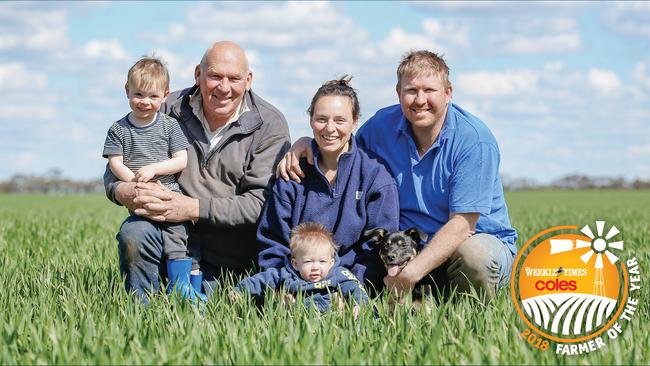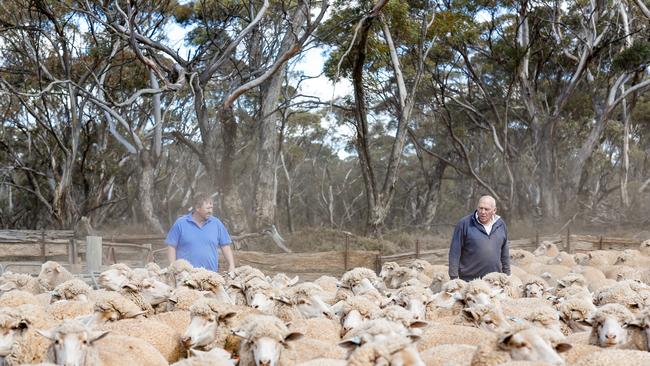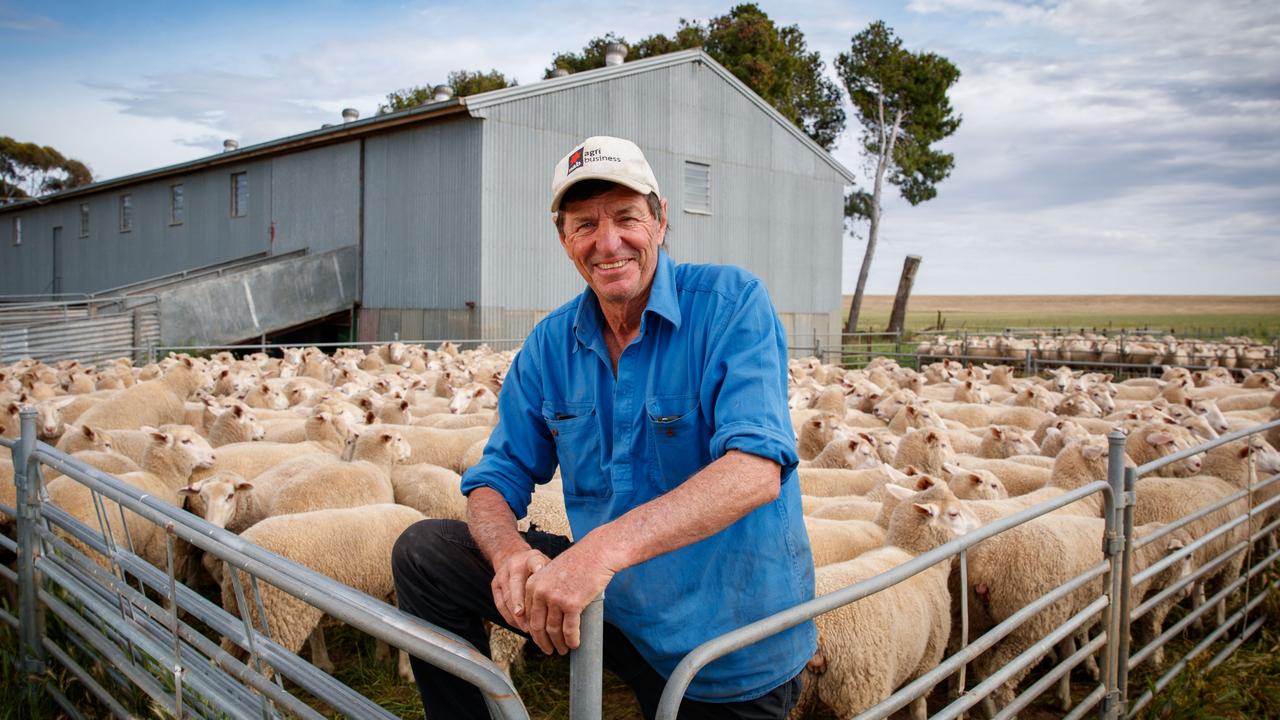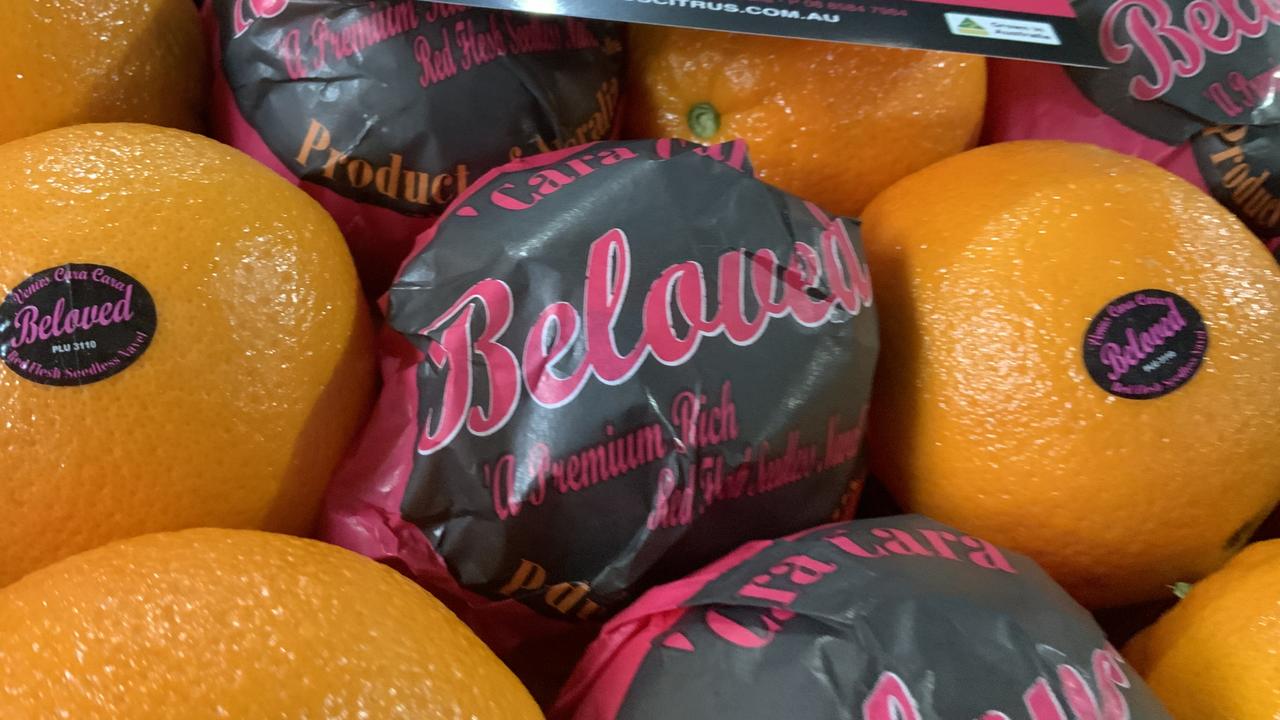Ferrier family invest in best practice for Birchip cropping farm
IN TOUGH Mallee conditions, the quest for profits and efficiency is driven by what’s best for the family, writes MADELEINE STUCHBERY.

AN EMPHASIS on the family unit is at the centre of the Ferrier farming operation, a 5000ha cropping and livestock property at Jil Jil, north of Birchip in the Mallee.
At its head John Ferrier, who works alongside his son David and wife Deanne.
Farming barley, wheat, lentils, chick peas and field peas is no easy feat, particularly in a season marked by dry weather, strong winds, and inaccessible sub soil moisture.
MORE FARMER OF THE YEAR: MURPHY FRESH
MORE FARMER OF THE YEAR: JIM HONNER
MORE FARMER OF THE YEAR: BEN BECK
But investments in technology and smart farming practices means the effects of tough conditions seemingly roll off this family like water off a duck’s back.
This season, the Ferrier’s have sown 30 per cent break crops consisting of canola, lentils, chick peas and field peas.
FERRIER FAMILY
JIL JIL
GROW 5000ha of barley, wheat, lentils, chick peas and field peas
HAVE invested in technology and smart farming practices
ALSO run 1500 breeding ewes
HAVE a policy of expansion
About 60 per cent of the farm was given over to cereals.
They also run about 1500 breeding ewes across the property.
While the Ferriers had a good season in 2017, rain during harvest caused a bit of stress.
“We were trying to get crops off with the rain falling,” Deanna said.
“But that was pretty much the last time it rained for the summer, until we had rain around early May.”
While a lack of rain may not be unusual in the northern parts of Victoria, Deanne said the start of the 2018 season was particularly dry.
By undertaking soil sampling across the property, Deanne, John and David were able to make informative, timely choices.
“We’ve had a dry start, pretty much no rain, but under crops grown last year there’s a bit of water, about 50mm of water about 30cm down,” Deanne said.
“Come spring, if we can get crop up and out of the ground, they’ve still got a chance to survive this year.”

RAIN DRAIN
DEANNA said they faced a number of challenges at the start of the year, including pesticide residues that needed rain to break down the residue from summer spraying.
“That, combined with low rainfall, trying to match break crops to soil water levels, and residues, it really made it challenging, all the while looking at the rain forecast every few hours,” Deanne said.
The Ferriers are one of about 10 local families who have collectively bought a soil sampler, which they use to look at the condition of paddocks.
“Soil sampling is quite laborious,” Deanne said.
“But it’s always good to see what your moisture profile is. We based our canola cropping percentage on paddocks that had soil water. And we’ve made some changes, based on that soil sampling.”
While moisture was detected in the soil, Deanne said the next challenge would be connecting the moisture with the sown crops.
“We need to get enough rainfall to match it,” Deanne said.
“Given that it’s been so dry, because the moisture is so far down, it’s not going anywhere.”
HAUL OF FAME
THIS season, ongoing dry conditions are set to take their toll on crop yields.
Despite that, David said an ideal wheat yield was an impressive two tonne a hectare.
“In the long term, ideally about three tonne,” David said.
“In past years we’ve had about three to four tonne, even five tonne some years.”
Will they yield five tonnes of wheat a hectare this season? Put simply, no.
Deanne estimated harvest would start early this year, given the dry conditions.
“It’s likely to be an early harvest start and finish, but without another rain we may not harvest much at all,” Deanna said.
“Given we’ve only had about 10mm of rain for the growing season to date, and drier than average outlook for spring, yield potential is very low, zero to maybe one tonne a ha for wheat yields on better soil.”
“You can’t tell it’s a drought until it’s done. For us, we’ve had some rainfall, but we’ve had a dry spell. You’re always going to have dry spells in the Mallee,” David said.
A mixture of soils are present across the 5000ha property, from sandy soils, clay, and sandy loam.
Knowing what soils are in what paddocks, and the moisture content of said paddocks, helps John, Deanne and David decide what to sow and when.
“Ideally, on the sand you can sow early, you want to get it up in the first rain. Our issue was we had residues on that soil,” Deanne said.
TECH SAVVY
INVESTMENT in technology is one way farmers like the Ferrier’s can beat nature at its own game.
“You can grow crops nowadays on less rainfall than you used to,” Deanne said.
A recent investment in a new seeder means the family can sow with more accuracy, which on such a large property makes an incredible difference.
“It’s more a parallelogram, the press wheels follow right behind, it gives us better seed soil contact,” David said.
“That gives us more consistency as we’re trying to get the right depth across the whole bar.”
“We need to shorten our sowing windows,” Deanne said.
“Everyone is trying to get the timing right. Seeding decisions have been made on a day by day basis, which has been a challenge. Everything from residues, soil types, soil water, rainfall, it all combines to make you have to use your mind as to where to go next.”
Every decision — agronomical, financial, and technological — appears to centred around what will make the farm the most viable for the family; what is the easiest and most efficient way of operating, so this family can spend time together.
It’s a move away from farming practices of the past, said John.
“Our skills, our own personal understanding, it really has changed,” John said.
GROW FOR IT
JOHN said the family had a policy of expanding the farm.
“We’ve enjoyed agriculture, it is profitable in the big picture,” he said.
“The major changes we’ve made have been really about improving our agricultural skills, improvements in varieties and in our abilities to do the job in a timely way, and huge changes in the marketing system.
“In the old days, you’d take the grain down to the silo, tip it down a hole and that’d be the last you knew about it. The quality of the grain they used to just call it FAQ — Fair Average Quality. Now, every load we can tell with yield mapping where it comes from in the paddock. We can look at the soil type and understand why things are happening,” John said.
“Our parents didn’t have the business sense we have today. There’s been a massive change in the way farms are run. The people you have around you, the advice you can get, agriculturally, financially, there’s a whole skill set of people out there.”
Deanne said farming will always be a challenge.
“But it depends on the whole family dynamic,” Deanne said.
“I guess what I’ve learnt from growing up on a farm is that farming is a big business. And it’s not just about buying product and putting it in the ground. It’s about organising everything around it.”


